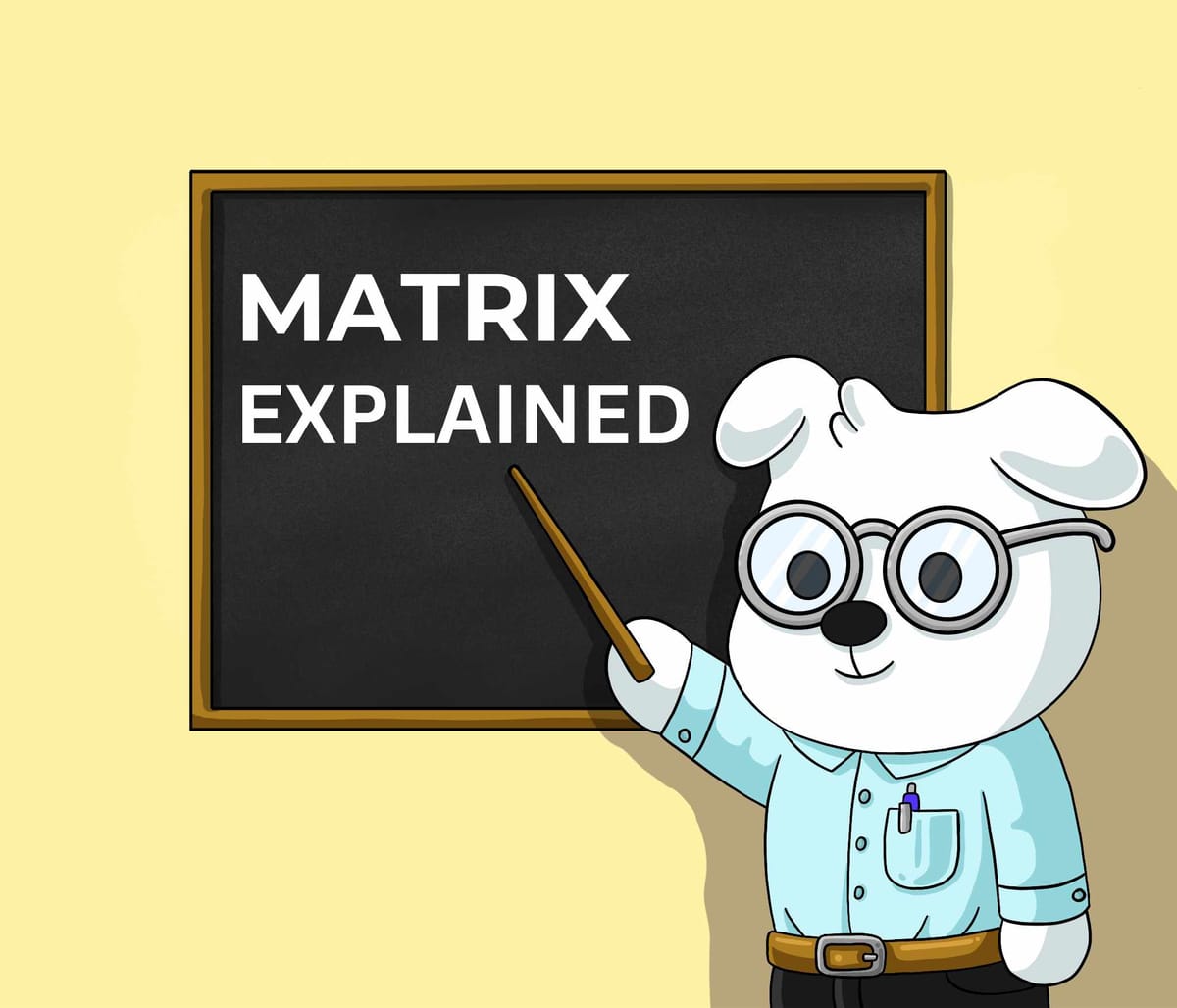Understanding Matrix in Mitosis: Three Explanations for Different Levels of Crypto Experience

Recently, Mitosis published its light paper, providing deeper insights into its technology and objectives as a new Layer 1 blockchain in the crypto ecosystem. One of the key innovations introduced in this paper is Matrix, a novel liquidity framework designed to optimize capital deployment in DeFi.
However, depending on your familiarity with crypto and decentralized finance, the way you understand Matrix may vary.
In this article, I will explain Matrix from three different perspectives:
- For someone new to crypto — a simple, intuitive explanation using familiar concepts.
- For someone with moderate crypto knowledge — a more detailed breakdown focusing on how Matrix fits within DeFi.
- For an experienced crypto user or developer — an in-depth, technical analysis of its mechanics and programmability.
Whether you’re taking your first steps into DeFi or you’re a seasoned developer looking for a deeper understanding, this article will provide the right level of insight for you. Let’s dive in!
For Someone Who Knows Nothing About Crypto
Imagine you have some money you’d like to invest, similar to putting it in a savings account or buying a certificate of deposit (CD) at a bank. The bank offers you a deal: if you keep your money locked in for a specific period, you’ll earn a higher interest rate. Matrix in the Mitosis project works similarly but in the world of digital finance (DeFi).
Here’s how it works:
- There are different investment opportunities, each with its own rules, such as how long your money must stay locked and how much interest you’ll earn.
- You choose an opportunity and deposit your money (in the form of a digital asset, like a token).
- In return, you receive a special token (called maAssets) that proves you made this investment. Think of it like a receipt or certificate.
- While your money is locked, the project or company you invested in uses it to grow its business.
- Once the time is up, you get your original money back plus extra rewards, which could be in the form of additional tokens or interest.
This system benefits both sides: businesses and projects get the funding they need, and investors like you earn more than they would by just holding onto their money. Unlike banks, this happens on a decentralized blockchain network, meaning there’s no middleman — everything is managed through smart contracts that automatically enforce the rules.
For Someone Who Has Been in Crypto for a Year
Matrix is a time-bound liquidity provisioning system within the Mitosis ecosystem, designed to help DeFi protocols attract liquidity by offering higher incentives to liquidity providers (LPs) who commit their assets for a fixed period. Unlike Ecosystem-Owned Liquidity (EOL), where deposits are collectively managed through decentralized governance, Matrix allows LPs to individually choose specific liquidity campaigns based on their preferred risk-reward profile.
Here’s how the process works:
- Campaign Selection: LPs review available Matrix campaigns, considering lock-up duration, reward structure, and accepted assets.
- Deposit & maAssets: Once an LP commits Vanilla Assets (e.g., ETH or USDC) to a campaign, they receive maAssets (e.g., maETH), which act as on-chain receipts tied to that specific campaign.
- Lock-Up Period: The locked assets cannot be withdrawn until the end of the campaign. This ensures liquidity stability for the target protocol while justifying higher yields.
- Rewards & Redemption: At the end of the campaign, LPs redeem their maAssets to reclaim their original deposit plus accrued rewards. Some protocols may distribute governance tokens or additional incentives, which can be claimed when maAssets are converted back to Vanilla Assets.
Key Benefits:
- LPs proactively select liquidity campaigns instead of relying on a general pool.
- Rewards are often higher than standard liquidity farming due to fixed-term commitments.
- Programmability: maAssets can be utilized in secondary DeFi applications.
- The M.O.R.S.E incentive program subsidizes campaigns, making early participation more attractive.
In summary, Matrix provides a structured, high-yield alternative to traditional LP staking, allowing protocols to efficiently acquire capital while giving LPs a transparent, campaign-specific investment choice.
For a Crypto Expert / Developer
Matrix is a curated liquidity framework within the Mitosis Liquidity Framework (MLF), distinct from Ecosystem-Owned Liquidity (EOL) in its granular approach to capital allocation. While EOL aggregates user deposits for deployment through decentralized governance, Matrix enables direct LP participation in specific liquidity campaigns, where protocols offer preferential yield incentives in exchange for term-based liquidity commitments.
Core Mechanism:
- Liquidity Campaigns: Protocols initiate campaigns detailing lock-up periods, accepted assets, and incentive structures.
- LP Commitment & Tokenization: When LPs deposit Vanilla Assets, the Mitosis protocol mints campaign-specific maAssets (e.g., maETH ABC), which function as tokenized representations of their locked capital.
- Yield Generation: The locked liquidity ensures capital availability for the protocol, justifying superior APYs. Rewards may be distributed periodically or at maturity.
- Redemption & Settlement: Upon campaign completion, LPs redeem maAssets for their principal + rewards. Some protocols issue governance tokens or point-based incentives, further enhancing participation dynamics.
Technical Differentiators:
- Programmability: maAssets enable composable financial strategies, allowing LP positions to integrate into broader DeFi mechanisms.
- Mitosis Vault Integration: Facilitates secure bridging, asset minting, and campaign-specific tokenization within Mitosis’ cross-chain framework.
- M.O.R.S.E Incentive Alignment: Provides MITO token incentives to protocols launching campaigns, accelerating TVL growth and mitigating liquidity fragmentation.
From a developer perspective, Matrix embodies DeFi-native liquidity engineering, leveraging standardized interfaces for position management while ensuring programmable composability across Mitosis’ execution environment. Its synergy with EOL fosters a balanced ecosystem, where long-term governance-driven liquidity (EOL) coexists with dynamic, campaign-based liquidity (Matrix), optimizing capital efficiency at multiple layers.
Conclusion
Thanks for reading! I hope you enjoyed this breakdown of Matrix in the Mitosis ecosystem. And you — what level of crypto are you? Let me know your thoughts!
Written by Frosty — Follow me on X for more insights! 🚀


Comments ()